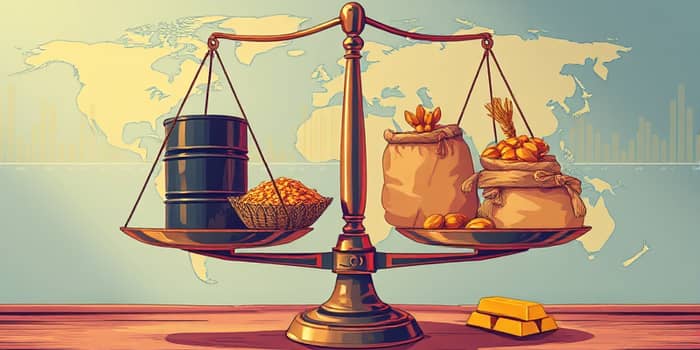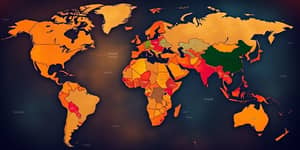
In early 2025, global commodity markets have entered a phase of relative calm after years of extreme swings driven by the pandemic, geopolitical tensions, and supply disruptions. Price indices are on track for a return to pre-pandemic price levels, marking a collective sigh of relief among producers, traders, and end users alike.
This transitional period offers a unique window for stakeholders to reassess strategies, build resilience, and capitalize on emerging trends. While headline numbers show declines, beneath the surface we witness pockets of strength, renewed risk appetite in precious metals, and robust demand in key industrial sectors.
Leading institutions forecast a broad slowdown in commodity prices, with a projected 12% drop in 2025 followed by an additional 5% decline in 2026. This moderation comes after a modest 2% gain in early 2024 and a sharp 14% slump in 2023, reflecting a market reset driven by reduced stimulus measures and evolving consumption patterns.
The aggregate Commodity Price Index is expected to edge down by 1% in 2025, signaling a balancing supply and demand pressures environment. Energy markets, metals, and agriculture each display distinct trajectories, but the overarching narrative is one of stability—albeit with localized volatility flickering at the edges.
The stabilization trend unfolds unevenly across sectors, as each category responds to its own supply-demand dynamics and risk drivers. A closer look reveals how some markets adjust downward while others find new footing amid uncertainty.
Coal continues to defy the broader pullback thanks to sustained electricity demand and slower renewable expansion. In contrast, industrial metals are retrenching after strong post-pandemic rebounds, while precious metals surge on safe-haven flows and central bank purchases.
Underlying the stabilization is a dual narrative of cooling demand projections and improving supply conditions. The expectation of slower global growth has tempered consumption forecasts, especially in manufacturing hubs and emerging economies facing tighter financial conditions.
On the supply side, record output in oil and agriculture has alleviated earlier shortages. U.S. shale producers have ramped up production, keeping natural gas prices stable domestically, while agricultural yields in major exporters have recovered from weather-related setbacks, long-term structural shifts in demand notwithstanding.
Despite this tranquil backdrop, key uncertainties could reignite price swings at any moment. Trade tensions—particularly renewed U.S.-China disputes—cast a shadow over industrial metal and energy markets. Meanwhile, conflicts in the Middle East and North Africa keep premiums in oil and gold elevated.
Climate events and supply-chain disruptions remain wild cards. Floods, droughts, and logistical bottlenecks can quickly upend agricultural forecasts, triggering sudden spikes. Currency fluctuations, especially a stronger U.S. dollar, add another layer of complexity by making commodities more expensive for non-dollar buyers.
In this evolving market landscape, skilful navigation becomes paramount. Market participants must embrace resilience through strategic risk management and hedging, while staying attuned to policy shifts and structural trends.
By combining disciplined risk controls with agile decision-making, traders and investors can mitigate downside exposure and seize opportunities created by market normalization. Policymakers, in turn, can reinforce safety nets—such as crop insurance and strategic reserves—to cushion future shocks.
As volatility subsides, new prospects emerge for innovation and sustainable growth. The energy transition, for example, continues to spur demand for critical minerals and clean technologies. Agricultural participants are exploring precision farming and climate-resilient crops to safeguard production against extreme weather.
This moment of equilibrium invites reflection: by learning from past disruptions, stakeholders can forge more robust strategies and collaborative frameworks. Whether through investment in green infrastructure, adoption of advanced risk analytics, or strengthening of international cooperation, the path forward lies in harnessing stability to drive long-term value.
Ultimately, the stabilization of commodity markets is not merely a statistical inflection—it is an invitation to rethink how resources are produced, traded, and consumed in an interconnected world.
References













